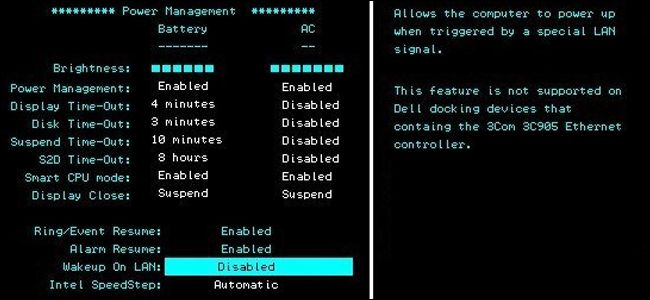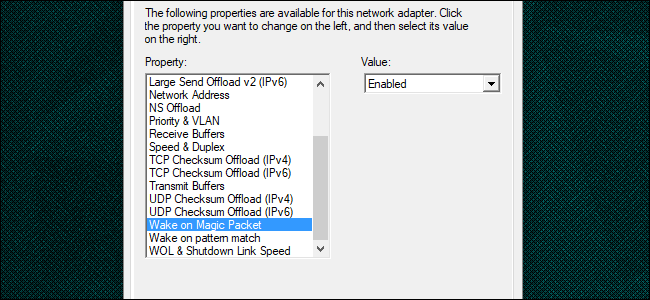
- How To Configure Wake On LAN on Windows. Using WOL (Wake On LAN) it is possible to wake up your computer using the Unified Remote app. However, this feature is typically not enabled by default.
- Native Windows 10 Universal WOL tool. Easy WOL allows to 'wake up' compatible PCs and other devices by sending a specially crafted 'Magic Packet' to your network. To wake up a device on a local network all you need to provide is the MAC address. Easy WOL will calculate broadcast address and send WOL packet to all devices on your local network.
- Wol Wakes Computer
- Wol Wake On Lan
- Wol Wake On Lan Wan Setup
- Wol Wake Up On Lan
- Wol Wake On Lan Windows 10
- Wol Wake On Lan Windows 10
- Wol Wake On Lan
Subnet-Directed Broadcast. This is the first type of WoL in ConfigMgr and is the traditional WoL. The WOL packet will be sent as a broadcast to all devices on the network. You can execute this line in the terminal, or use a simple bash script to open instead, that will do this for you #!/bin/bash echo 'Going to wake up your PC' sudo etherwake-i eth0 AA:BB:CC:DD:EE:FF.
-->
This article explains why unwanted wake-up events occur when you enable the Wake On LAN (WOL) functionality in Windows 7 and in Windows Vista, and describes how to configure the computer to wake only in response to a Magic Packet.
Original product version: Windows 7 Service Pack 1
Original KB number: 941145
Introduction
In Windows 7 and in Windows Vista, the WOL feature can wake a remote computer from a power-saving state such as sleep. When you enable WOL, the network adapter continues listening to the network when the computer is asleep. WOL wakes the computer if it receives a special data packet.
One kind of special data packet contains a wake-up pattern. By default, Windows 7 and Windows Vista listen for the following packets when you enable WOL:
- A directed packet to the MAC address of the network adapter
- A NetBIOS name resolution broadcast for the local computer name
- An Address Resolution Protocol (ARP) packet for the IPv4 address of the network adapter
- An IPv6 Neighbor Discovery packet for the network adapter's solicited-node multicast addressA Magic Packet can also wake a remote computer.
A Magic Packet is a standard wake-up frame that targets a specific network interface.
In most cases, a wake-up pattern or a Magic Packet enables remote access to a computer that is in a power-saving state. However, some networking protocols use these packets for other purposes. For example, routers use ARP packets to periodically confirm the presence of a computer. Such protocols do not use these packets to wake computers. However, in some networks, network traffic may wake up a remote computer by mistake. These unwanted wake-up events may occur in especially noisy environments such as enterprise networks. Therefore, by default, WOL is disabled in Windows 7 and in Windows Vista.
More information
WOL can be an effective way to conserve power while keeping a computer reachable on the network.
However, unwanted wake events may occur after you enable WOL. For example, the computer may wake up soon after it enters a power-saving state. One cause may be that the network environment generates wake-up patterns too frequently. In this situation, we strongly recommend that you configure the computer to wake only in response to Magic Packets. Magic Packets are especially designed to wake up a computer from a power-saving state. Also, because a Magic Packet is specific to the MAC address of a network adapter, a Magic Packet is unlikely to be sent accidentally.
To configure Windows 7 in this manner, follow these steps:
- Click Start, type Network and Sharing Center in the Start Search box, and then press Enter.
- On the Tasks bar, click Change adapter settings.
- Right-click the network adapter that you want to configure, and then click Properties. For example, right-click Local Area Connection, and then click Properties.
- If you are prompted for an administrator password or for confirmation, type the password or provide confirmation.
- Click Configure.
- If the network adapter supports WOL, click to select the Allow this device to wake the computer check box on the Power Management tab, select the Only allow a magic packet to wake the computer check box, and then click OK.
To configure Windows Vista in this manner, follow these steps:
- Click Start, type Network and Sharing Center in the Start Search box, and then press Enter.
- On the Tasks bar, click Manage network connections.
- Right-click the network adapter that you want to configure, and then click Properties. For example, right-click Local Area Connection, and then click Properties.
- If you are prompted for an administrator password or for confirmation, type the password or provide confirmation.
- Click Configure.
- If the network adapter supports WOL, select the Allow this device to wake the computer check box on the Power Management tab, select the Only allow management stations to wake the computer check box, and then click OK.
You may also have to enable BIOS settings to enable WOL. The specific BIOS settings depend on the manufacturer of the computer.
Software
Gammadyne Corporation offers the following DOS command line programs which you may download and use freely.
Do you need a
custom-builtWol Wakes Computer
command line utility developed to your specifications? Our prices are very reasonable, and automating part of your business is always worth a one time expense! Inquire here.
Notes
- These programs run on all versions of Windows since XP.
- You may distribute these programs as long as they are not modified or sold. If you would like to package them with a commercial program, please contact us.
- These programs do not have a graphical user interface. They are meant to run from a command line (DOS prompt), batch file, or shortcut. You should keep your command line programs in a folder on your hard drive, preferably one in the PATH. We recommend 'c:windowssystem32'.
- By the act of downloading and using these utilities, you must agree to the terms of the End-User License Agreement, which can be found here. If you do not agree to the terms, you are not authorized to use our software.
- Send comments here.
Wol Wake On Lan

Program Index
| BACKUP9.EXE - File Backup Utility |
Wol Wake On Lan Wan Setup
| COMBINE.EXE - File Combining Utility |

| DELNEXT.EXE - Delete At Next Reboot Utility |
| DELS.EXE - Recursive File Deletion Utility |
| DIGSIG.EXE - Digital Signature Utility |
Wol Wake Up On Lan
| FCMP.EXE - File Comparison |
| FIREWALL.EXE - Windows Firewall Configuration Utility |

| GPATCH.EXE - File Patching Utility |
| GS.EXE - Greg's DOS Shell |
| NUMLINES.EXE - Source Code Line Counter |
| PECHKSUM.EXE - Portable Executable Checksum Utility |

Wol Wake On Lan Windows 10
| SIZEOF.EXE - File Size Reporting Utility |
| SLEEP.EXE - Power Management Utility |
Wol Wake On Lan Windows 10
| STARTAS.EXE - Executes a DOS command line under a different user account. |
Wol Wake On Lan
| TIMER.EXE - Timer Utility |





